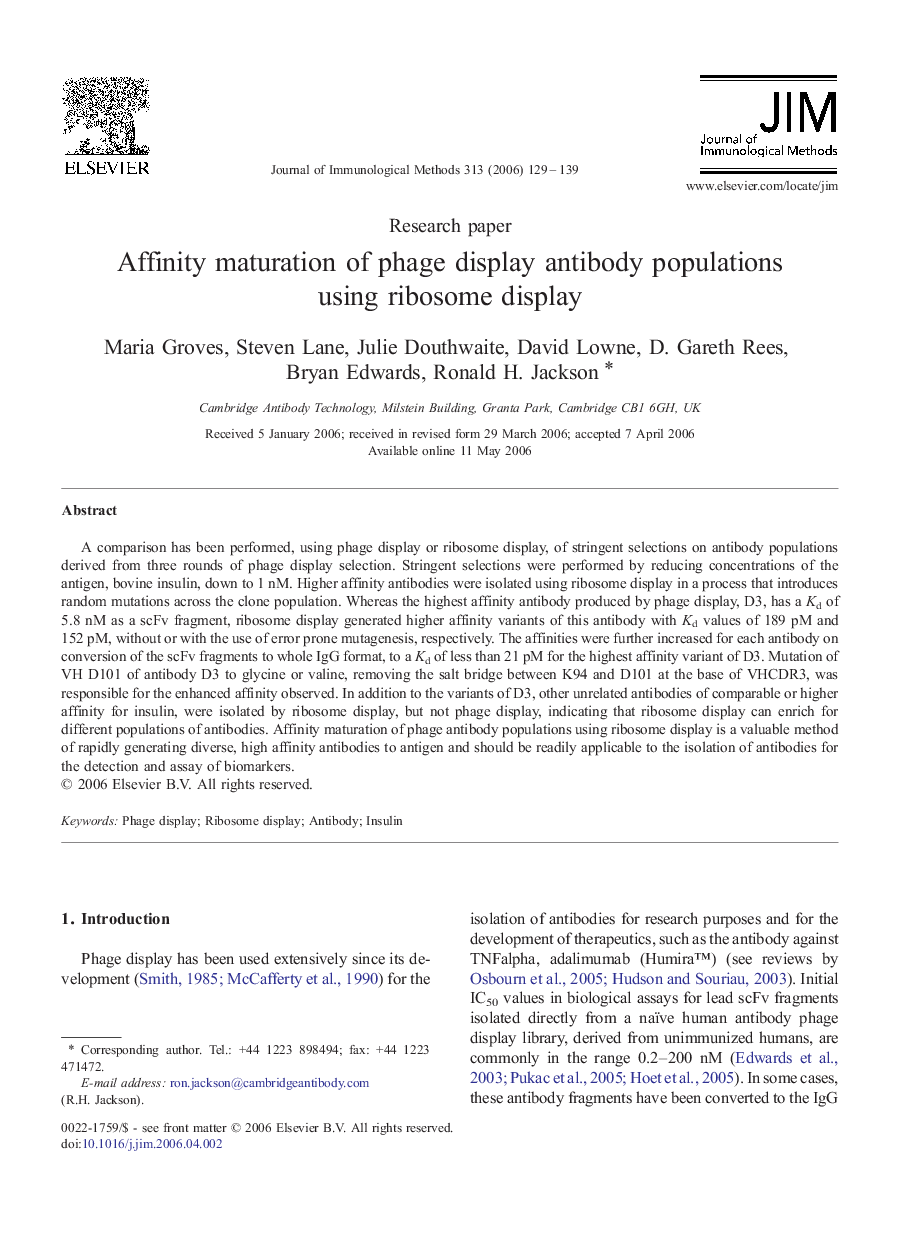| کد مقاله | کد نشریه | سال انتشار | مقاله انگلیسی | نسخه تمام متن |
|---|---|---|---|---|
| 2089352 | 1545787 | 2006 | 11 صفحه PDF | دانلود رایگان |

A comparison has been performed, using phage display or ribosome display, of stringent selections on antibody populations derived from three rounds of phage display selection. Stringent selections were performed by reducing concentrations of the antigen, bovine insulin, down to 1 nM. Higher affinity antibodies were isolated using ribosome display in a process that introduces random mutations across the clone population. Whereas the highest affinity antibody produced by phage display, D3, has a Kd of 5.8 nM as a scFv fragment, ribosome display generated higher affinity variants of this antibody with Kd values of 189 pM and 152 pM, without or with the use of error prone mutagenesis, respectively. The affinities were further increased for each antibody on conversion of the scFv fragments to whole IgG format, to a Kd of less than 21 pM for the highest affinity variant of D3. Mutation of VH D101 of antibody D3 to glycine or valine, removing the salt bridge between K94 and D101 at the base of VHCDR3, was responsible for the enhanced affinity observed. In addition to the variants of D3, other unrelated antibodies of comparable or higher affinity for insulin, were isolated by ribosome display, but not phage display, indicating that ribosome display can enrich for different populations of antibodies. Affinity maturation of phage antibody populations using ribosome display is a valuable method of rapidly generating diverse, high affinity antibodies to antigen and should be readily applicable to the isolation of antibodies for the detection and assay of biomarkers.
Journal: Journal of Immunological Methods - Volume 313, Issues 1–2, 30 June 2006, Pages 129–139